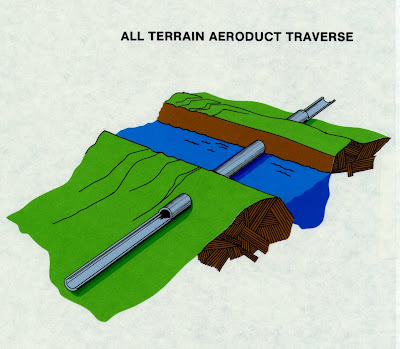In an article from eight years ago in the NY Times, author David W. Chen talked about the plans back then for replacing the bridge. He also made these general points about trying to increase capacity for highways or bridges:
Not so many years ago, it was common wisdom that the only way to relieve highway congestion was to add new lanes. Now the common wisdom, supported by several recent studies, is that expanding a road usually leads to substantial increases in the number of vehicles on it. ''Adding highway capacity to solve traffic congestion is like buying larger pants to deal with your weight problem,'' said Michael Replogle, transportation director of the advocacy group Environmental Defense, in Washington.And, that of course, is why the current wheel based ground transportation system is at maximum capacity, a capacity that cannot be increased, and a capacity that will require enormous expenditures just to stay at the same level. In other words, cars and trucks on roads will overall become bottlenecks as the USA (and world) population continue to increase, slowing down the economic and social progress of society, and yet still requiring huge sums of money to keep infrastructures usable.
So in New Jersey, the state transportation commissioner, James Weinstein, could go before a business group last week and utter words that would have been heresy in that car-besotted state just a few years ago: ''We're past the period where adding lanes is the solution to traffic congestion, make no mistake about that.''
For this reason alone - and there are numerous others - we can't seriously consider today's transportation system as belonging to the future. Unless it is replaced by something much more flexible and far less expensive, our future will be all the less desirable. Those who have been reading these blog entries know that my company, Aeromobile Inc., has developed a ground transportation system consisting of air cushion vehicles in elevated guideways. We call it the Aeroduct System, and its many advantages are given on our website and in earlier blog posts. For the purpose of today's blog, the advantage I want to promote is how it will allow capacity for travel along the surface or across rivers to greatly increase. There will be no bottlenecks, and congestion will become something of the past.
The Aeroduct guideways will be much lighter than paved roads and much cheaper to build. And they will be orders of magnitude lighter and cheaper than elevated pavement, including bridges. The guideways can be stacked vertically or horizontally, allow infinite expansion of capcacity as needed. Automation of the air cushion vehicles in the guideways will allow faster speeds than cars and more consistency in vehicle movement. Even one aeroduct guideway will allow more throughput than a road of today, and it will be much simpler and cheaper to add guideways when the demand is there. And, aeroducts will carry vehicles of any size, so air cushion trucks as well as air cushion cars will be used.
If we stick with cars, trucks, paved roads, expensive and woefully overloaded bridges, we won't get to any sort of promising future. We'll be stuck in the traffic of a now obsolete technology, and spending all our money for that dubious privilege. With the Aeroduct System, we have the technology enjoy a liberating means of travel instead of a continuing to suffer from an increasingly constrictive one. I invite anyone with any interest in a better future to let me know what he or she thinks.

